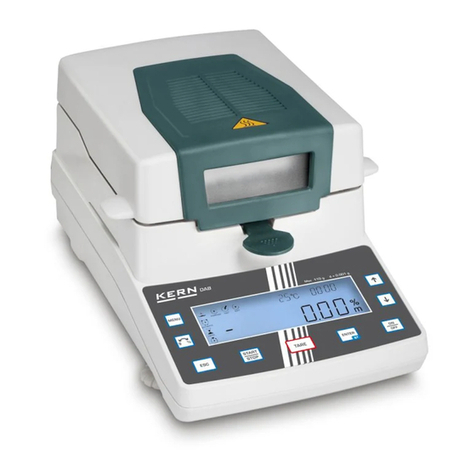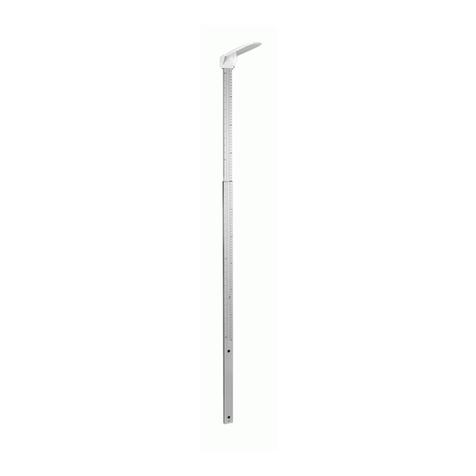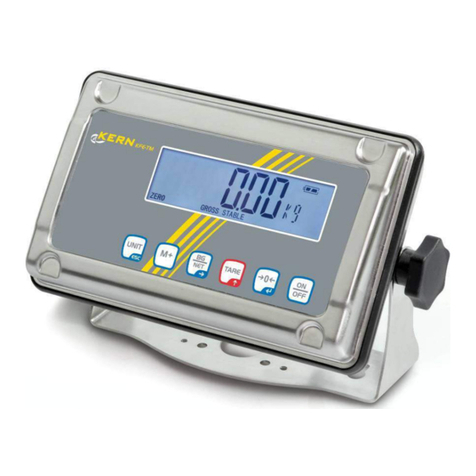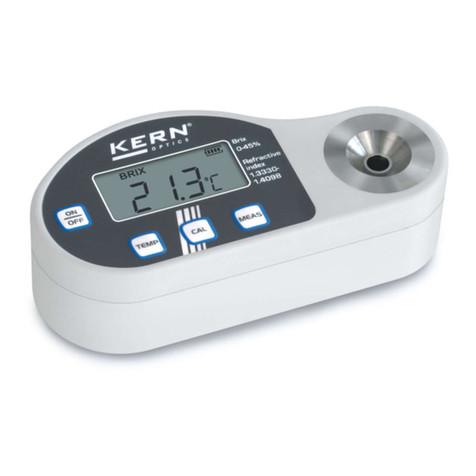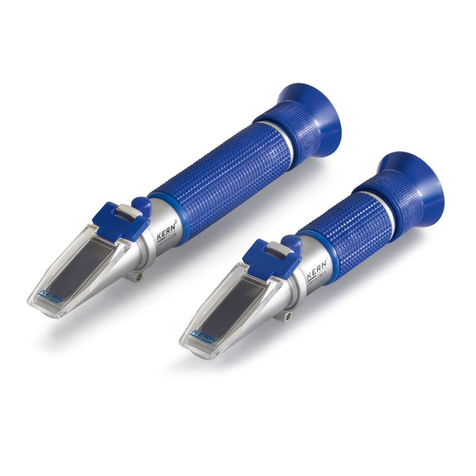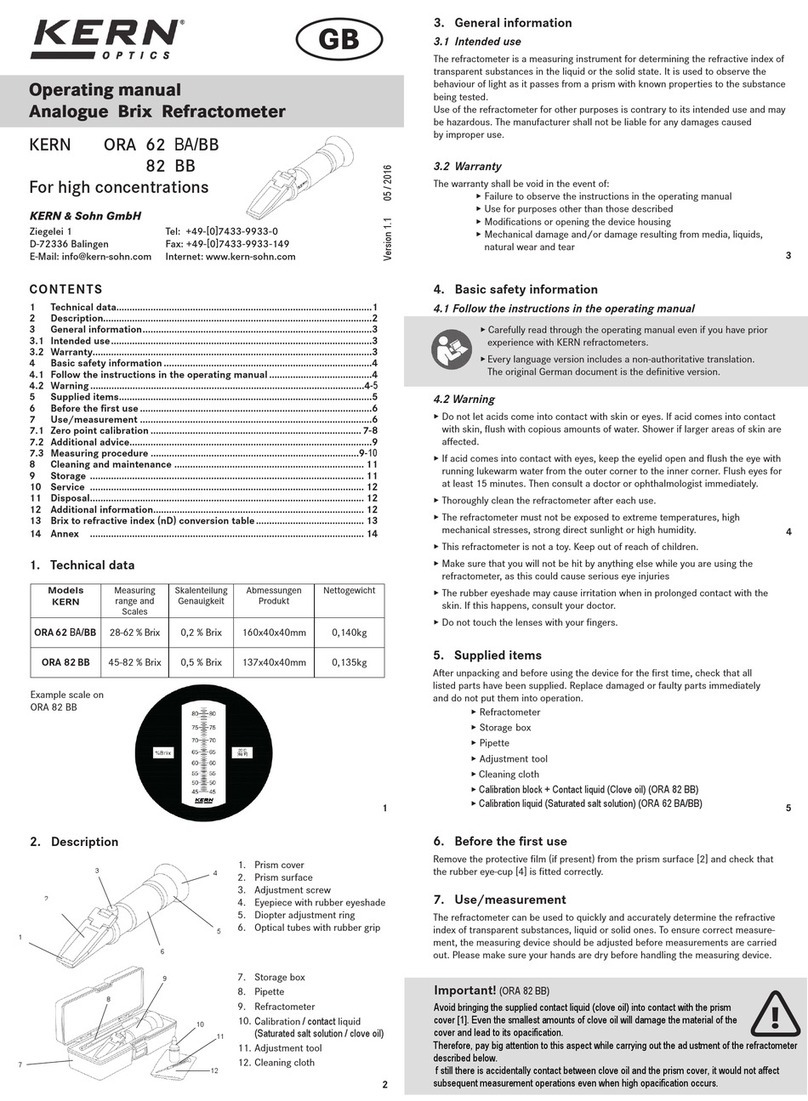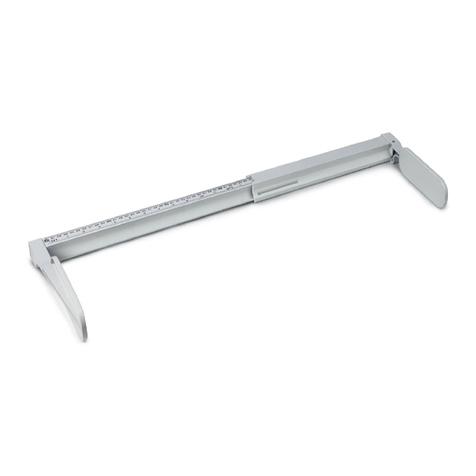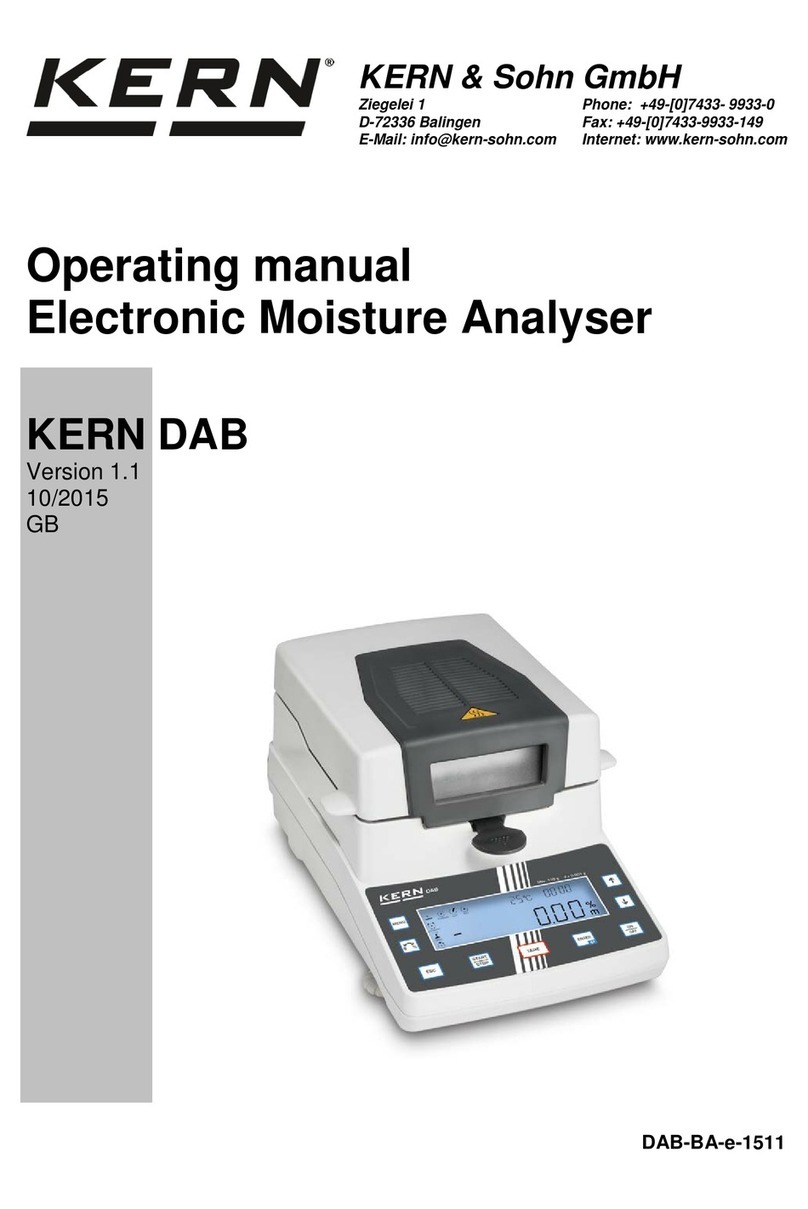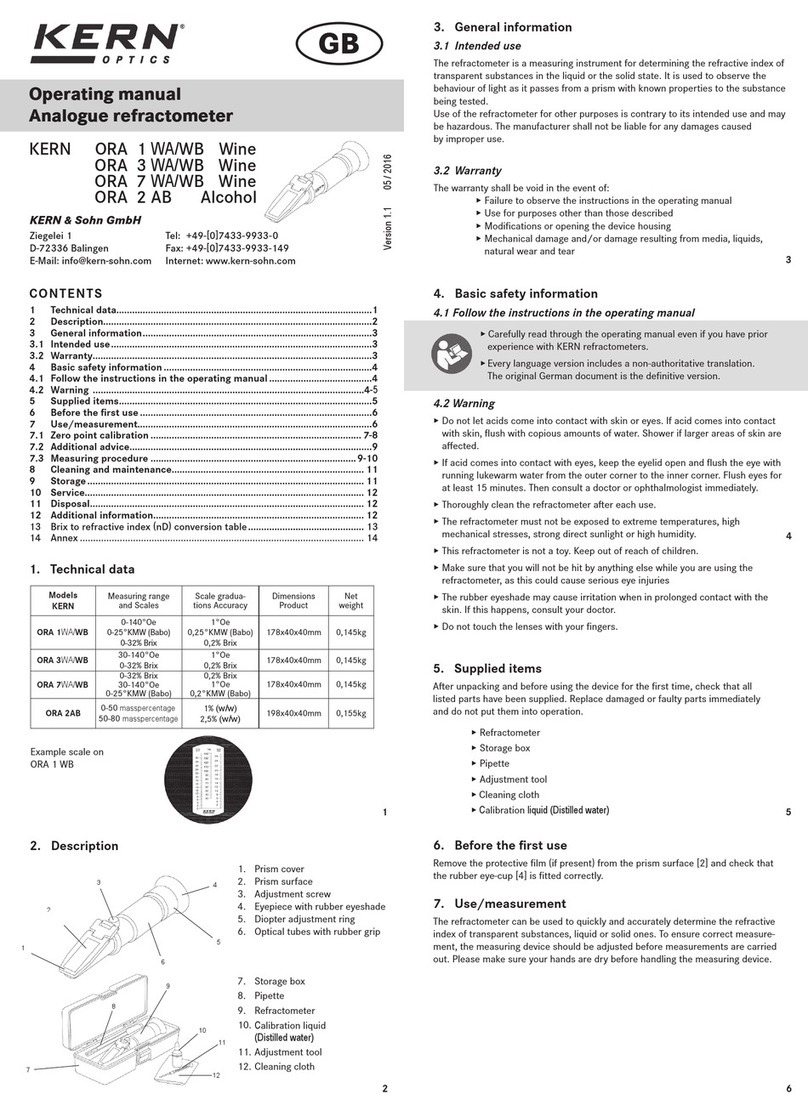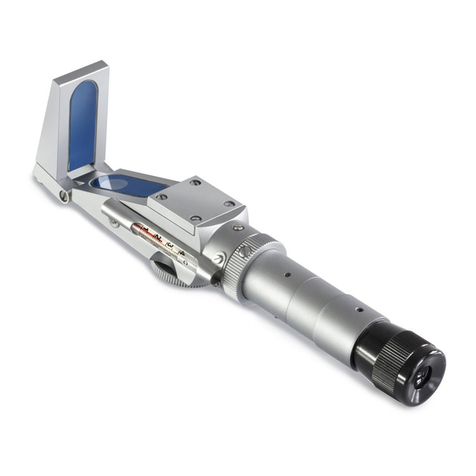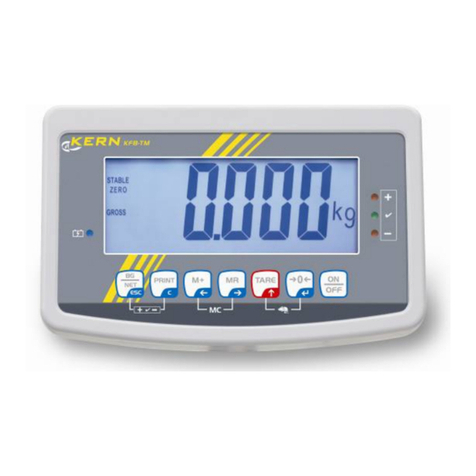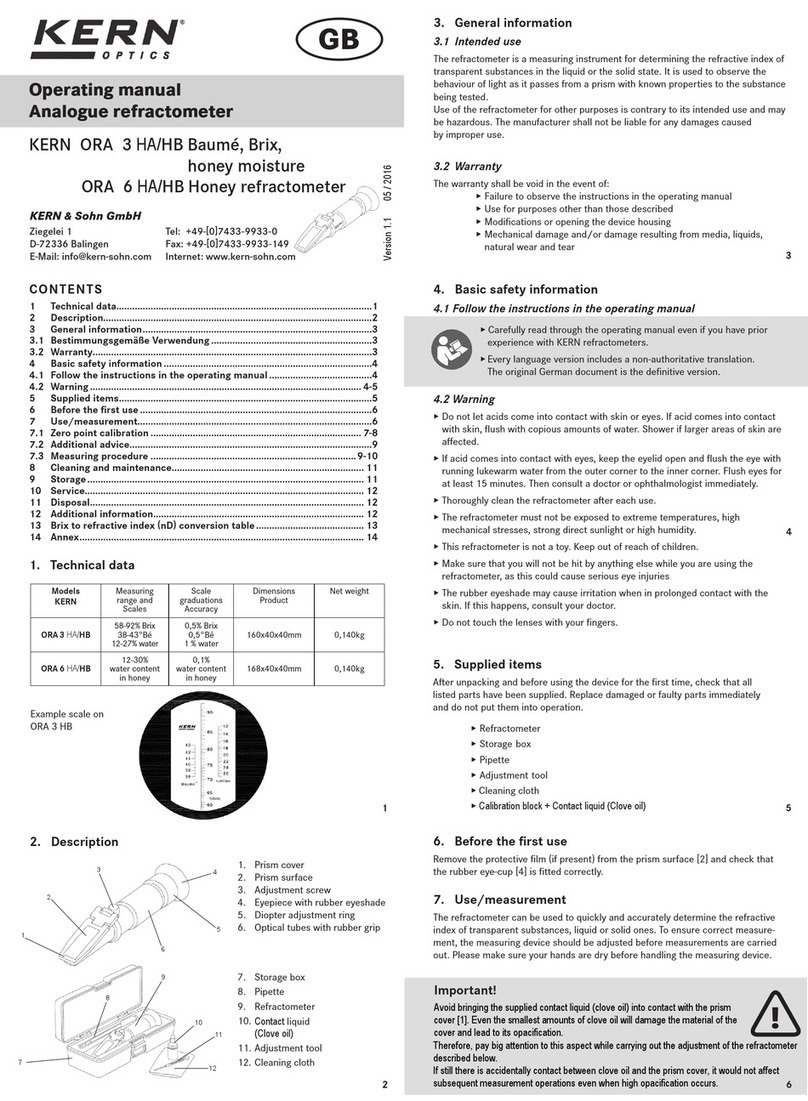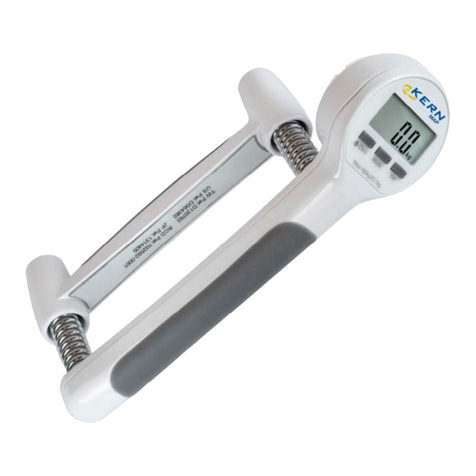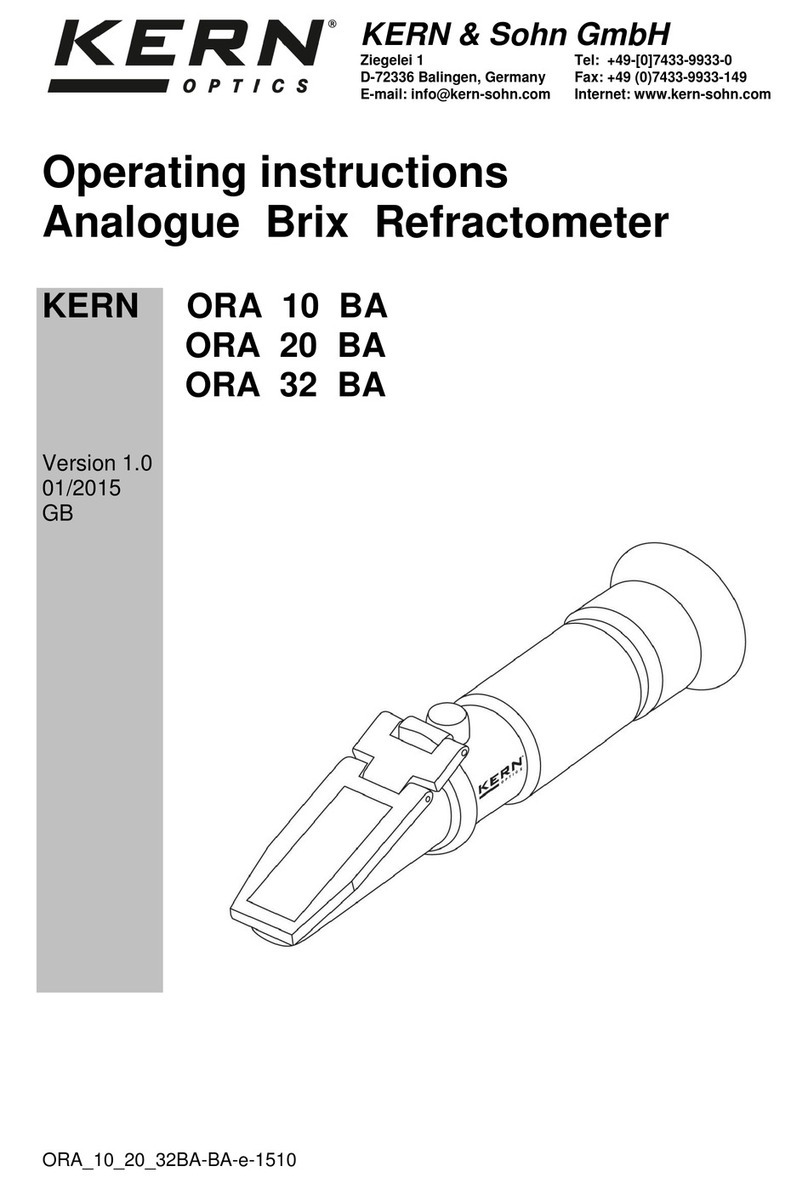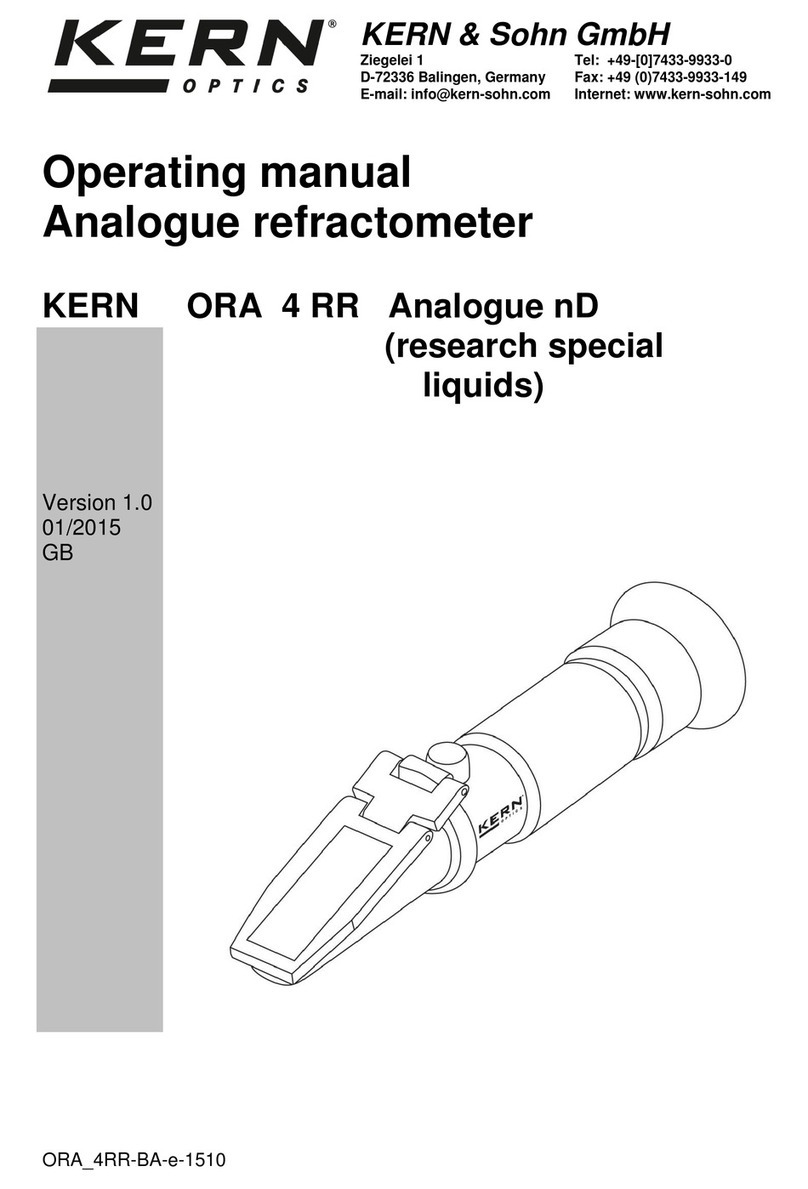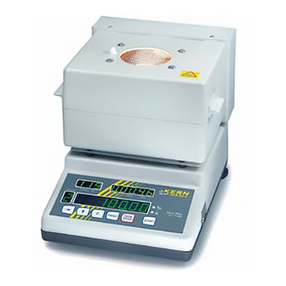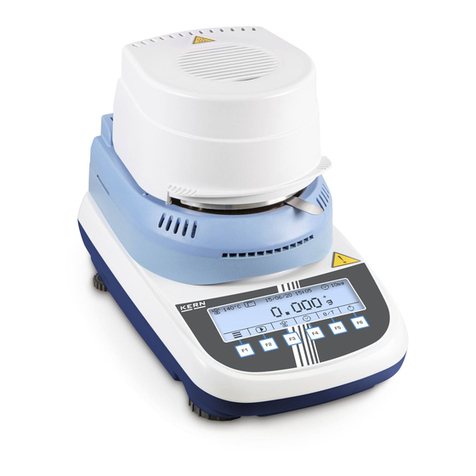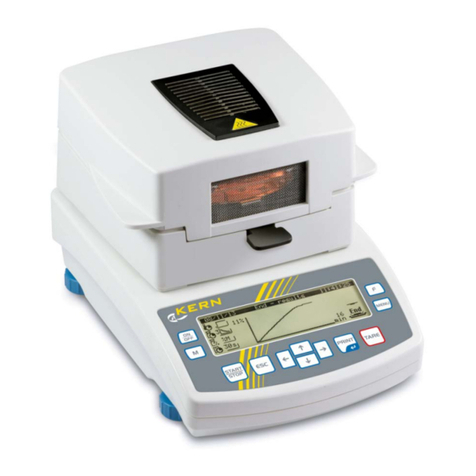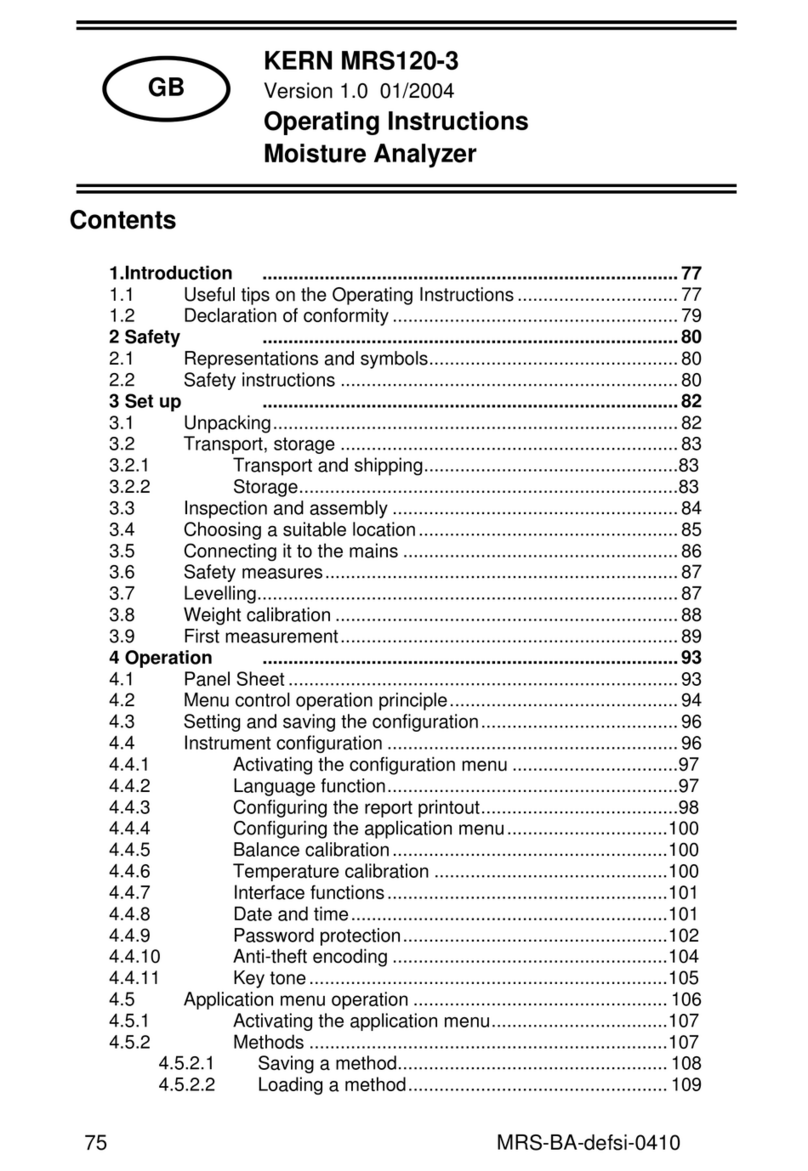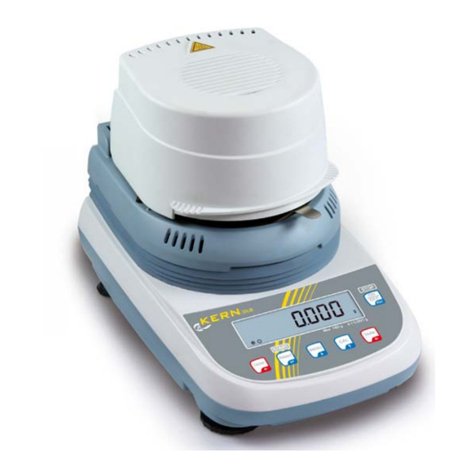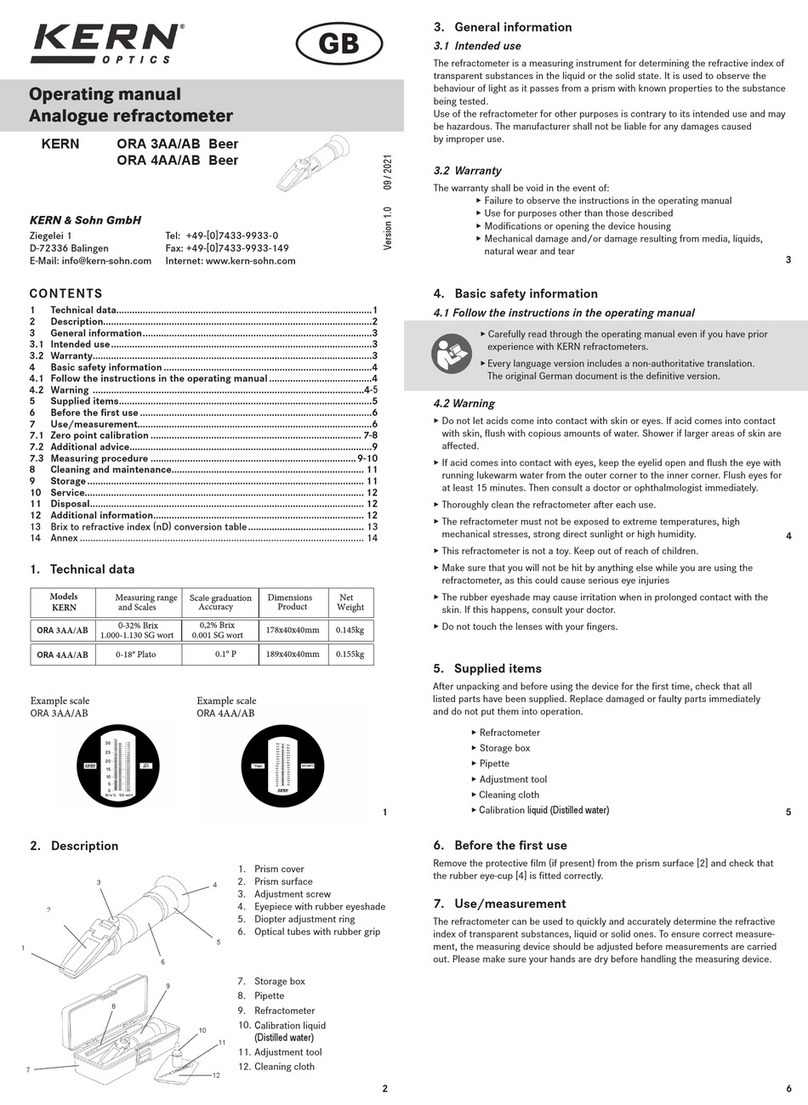
7
14
8
9
10
12
11
13
Important!
The ambient/room temperature and the sample temperature
influence the refractometer measuring result.
The scales are designed for an ambient temperature of +20 °C!
7.1 Calibration with the calibration block
Prior to any kind of measuring operation a calibration of the device has to be done.
Please put one drop of the contact liquid (Diiodomethane) on the prism [4]. Now put the
calibration block with the smooth and polished surface on the prism [4]. Use only slight
pressure. There must not be any pimples between the calibration block and the prism.
Close the prism cover [2].
Now please look into the eyepiece.
You should read 1,515at the light/dark boundary.
In case you read a different value the calibration of the refractometer has to be redone.
This recalibration can only be done in a dealers workshop.
After having finished please clean the refractometer. See point [8].
7.2 Measuring procedure
*
▸ Make sure your hands are dry before handling the refractometer.
Put the refractometer always on a flat table surface and do not tilt or hold it up with your
hands during the entire measuring process.
▸ Open the prism cover [2]and apply one drop only of the contact liquid*onto the
prism surface [4]. Now place the gemstone with as flat a face as possible onto the
prism [4]. There is now an oil film between the gemstone and the prism [4]. Close
the prism cover [2] and wait about 30 seconds (for optimal temperature equalisation
between the sample and device).
▸ View the measurement scale through the eyepiece [5]. Point the refractometer‘s
illumination aperture [1]at a bright light source while doing this (If the daylight
should not be sufficient, you can use an additional LED.
▸ Raise or lower the eyepiece [5]to focus the optics.
▸ Depending on the type of gemstone the light/dark boundary on the scale reveals
the result.
▸ To determine the birefringency index unscrew the polarisation filter [3]and place
it on the eyepiece [5]. Bring the light/dark boundary on the scale into focus by
rotating the polarisation filter [3]and read off the value. Now rotate the gemstone
by 90° and make a new measurement as described. Read off the second value.
▸ The difference between the first and the second value is the birefringency.
▸ For birefringent gemstones it is between 0.003 and 0.278. When the measure-
ments are complete screw the polarisation filter [3]back into its mount
on the cover [8].
▸ Carefully clean the supplied pipette [8]and the refractometer aer carrying out
the measurement.
Important!
Aer every measurement, use a lint-free, absorbent cloth to remove
the fluids from the prism surface [4]. Then carefully clean the prism
and prism cover using a cloth moistened with water or if necessary
alcohol, and dry both parts using a so, dry and lint-free cloth.
Avoid rubbing the prism [4].
!
8. Cleaning and maintenance
Clean the refractometer by using a so, lint-free cloth moistened with water, or if
necessary use pure alcohol. Do not use any aggressive or abrasive cleaning agents.
Never immerse the device in water or hold it under running water. Never handle the
device with wet or damp hands.
Never touch the measuring prism [4]with hard tools made from plastic, wood,
rubber, metal, glass etc. Hard objects can quickly damage the relatively so prism
glass, re-sulting in measurement errors.
The refractometer is maintenance-free.
Cleaning should be carried out immediately before and aer each use of the
refractometer to maximise its life and optimise measurement results.
9. Storage
Store the refractometer in a dry, non-corrosive environment, preferably between
10 °C and 30 °C.
10. Service
Aer reading this operating manual, if you have any questions about setting up
or using the refractometer, or if any unexpected problem occurs, please contact
your dealer. The device housing may only be opened by trained service
technicians authorised by KERN.
11. Disposal
The packaging consists of environmentally friendly materials which can be
disposed of via local recycling facilities.
The device and storage box should be disposed of by the operator in
accordance with applicable national or regional regulations at the place of use.
12. Additional information
The product may differ slightly from the illustrations. We reserve the right to
make changes to reflect technical advancements, decorations not included.
Avoid exposing the refractometer to direct sunlight!
Never bring the refractometer into contact with solvents.
!
*Further information on Measuring
The contact liquid (Diiodomethane), included with the standard outfit, has a
Refractive Index of 1.7425 nD.
If the gemstone to be tested has a Refractive Index, that is higher than 1.7425 nD,
another contact liquid (Anderson liquid), of which the Refractive Index is higher
than the Refractive Index of the gemstone, must be used.












